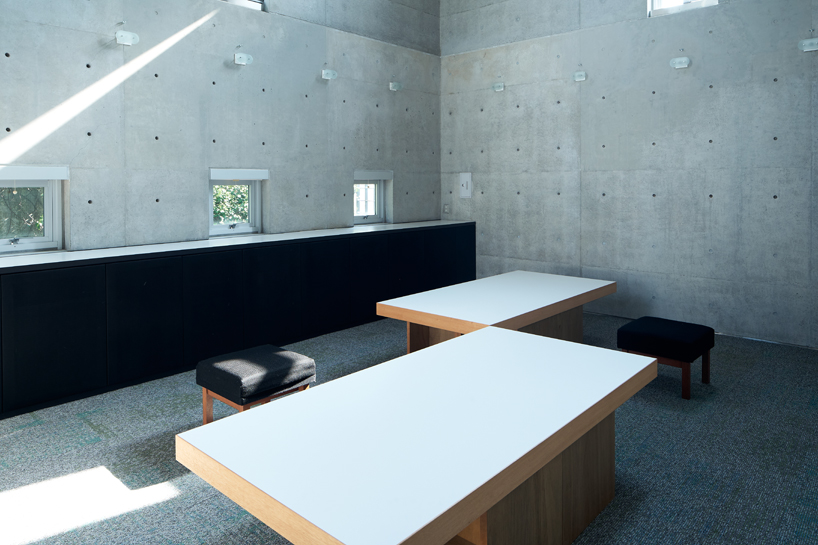floating miscellaneous goods revive arata isozaki’s original concrete building in japan
original building by Arata Isozaki turns into scarf shop in japan
LoHA design studio, led by Hiroshi Yamada, and Toshitaka Shimizu renovate the interior of a building in Katsuyama City originally designed by Arata Isozaki in 1985. Located in Fukui Prefecture, Japan, the initial house structure turns into commercial use as ‘Nimbus’ scarf and lifestyle shop. Isozaki’s concept frames the exposed concrete structure in a 1050 mm grid and a ceiling dome shaping strict geometric forms and symmetries. Following the architect’s design principles, the project adjusts slight modifications to the interior, opting for a flexible product display with soft variabilities, such as scarves and miscellaneous goods that appear floating in the room. The refurbishment sets up a large table that can be recombined and round rings on the wall for hanging wires. ‘The existing Isozaki architecture is likened to ‘heaven’, and the activities of people under it are likened to ‘earth’, adds the team referring to the name of the work ‘between heaven and earth’.

the large table in glossy finish reflects the light coming through the elevated dome | all images by Kyohei Noda
concrete geometric form sets up wire system to display products
The design team adjusts the existing structure by tuning the surface and frame to display the products, and setting exposed paneling and fixtures in the original dimensions of the 1050 grid. The renovation plan includes repainting the existing fixture counter, reupholstering the floor, and constructing new fixtures. White and silver veneers of melamine are applied on the surface of the tabletop to highlight both the displayed scarves and the concrete frame. Lauan veneer, a material that easily deteriorates over time, coats various surfaces in the interior inviting guests to touch it, sit on it, or feel a sense of physical scale. The counter door between the exposed gray concrete wall and the soft tile carpet floor lays on a speaker saran that mediates conflicting textures facing the composition of the marble wall standing opposite. The soft moss-like tile carpet is laid between the concrete forms. The gray hues of both the rough and soft surfaces of the hall make the colorful scarves stand out. Several round rings attached to the wall are set up as a device to stretch wires and form a hanging system for the showcase of the products.

the newly added large table can be recombined and transformed into two modules

the interior shapes a spatial composition reminiscent of Raumplan


